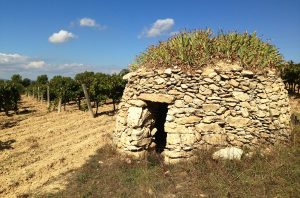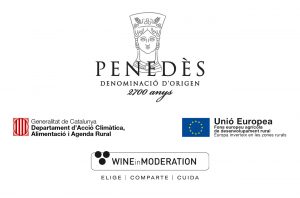Between the sea and the iconic mountain of Montserrat, Penedès is a wine region nestled in the Mediterranean basin – between the cities of Barcelona, to the north, and Tarragona, to the south – steeped in history, legend and the stories of all its passionate growers. With a winemaking heritage that covers three millennia, this is a place where the past is very much alive, and where the future opens exciting challenges and opportunities.
One region, three millennia
The history of winemaking in Penedès started with the arrival of the Phoenicians in the 7th century BC and the establishment of Catalonia’s very first vineyard, as proven by the carbonised and mineralised vitis vinifera seeds found in the territory. Another piece of historiographic evidence, a 3rd century bust of the Goddess Demeter, provided inspiration to the logo of the DO Penedès. She now crowns all of the region’s bottles,
with its ornate headdress of grapes and wheat tassels evoking the immemorial importance of agriculture in Penedès.

This long history is reflected in the variety and complexity of a winemaking landscape where past and present meet. The rediscovery of ancestral varieties and the exploration of historical styles (skin-fermented whites, pétillant natureles) is proof of a renewed interest in the viticultural wealth of a region that, during the 20th and early 21st centuries, has been able to reinvent itself as a hub of innovation, research and winemaking excellence. The region’s many terroirs and mesoclimates is reflected in the ten different sub-regions, each with a character of its own. From the sea-kissed vineyards of the Garraf, to the altitude sites of Penedès Superior, the region yields grapes that balance precision and flavour intensity.
Heritage and innovation
Today, the DO Penedès straddles the meeting of past and future by evoking its ancestral heritage with the energy of a close-knit community of talented winemakers and passionate growers. The expressiveness and diversity found within the region is as much a product of the multiple terroirs as of the individual characters that shape the identity of Penedès. If many of the region’s iconic producers have gained international recognition through their sparkling bottlings, their still wines are perhaps the way in which they best communicate their passion for the DO and its unique viticultural history. There is a renewed quest to express the deep-rooted identity of the land and indigenous grapes of Penedės. Benchmark examples of the region’s flagship variety, Xarel·lo, have become the DO’s calling card. The variety lends itself to a variety of styles, with its trademark silkiness, aromatic expressiveness and measured acidity. The red Sumoll, on the other hand, is increasingly being recognised for its natural brightness and freshness.

DO Penedès at a glance:
150 wineries
2,000 growers
2,500 hectares under vine
Wine styles: Still white, rosé and red.
Key white varieties: Xarel·lo (Penedès’ flagship variety), Macabeu, Malvasia de Sitges and Parellada. Some international grape varieties (namely Chardonnay, Riesling and Sauvignon Blanc) have also been introduced with great success.
Key red varieties: Sumoll, Ull de Llebre/ Tempranillo, Merlot, Cabernet Sauvignon, Garnatxa/Garnacha, Syrah. Rediscovered indigenous varieties: Moneu (red) and Forcada (white). Climate: Predominantly Mediterranean, with significant variations across all 10 sub-regions (significant continental influence in some of the areas of Penedès Superior and Central).
Regional diversity: 10 sub-regions divided into three main areas – Penedès Superior (Alts d’Ancosa, Costers de l’Anoia, Vall Bitlles-Anoia); Penedès Central (Conca del Foix, Costers de Lavernó, Costers del Montmell, Muntanyes d’Ordal, Turons de Vilafranca); Penedès Maritim (Marina del Garraf, Massis del Garraf).
The past as the way forward
With an understanding of the future as the work and product of the present, the winemakers of Penedès have collectively committed to specific sustainability targets. A core foundation of this strategy is the organic certification of all of the appellation’s wines from the 2025 harvest. The effort to build climate resilience also involves a renewed investment in ancestral varieties, uniquely adapted to the local terroirs and naturally able to withstand challenging and unexpected climatic events.
Among such rediscovered grapes are the red Moneu and the white Forcada, of which some producers are already producing award-winning expressions. This proves the potential for quality and expressiveness of varieties that, like no others, bridge the long past and the promising future of a unique Mediterranean wine region.
Discover more about DO Penedès
Connect on
Facebook | Instagram | Twitter | YouTube








